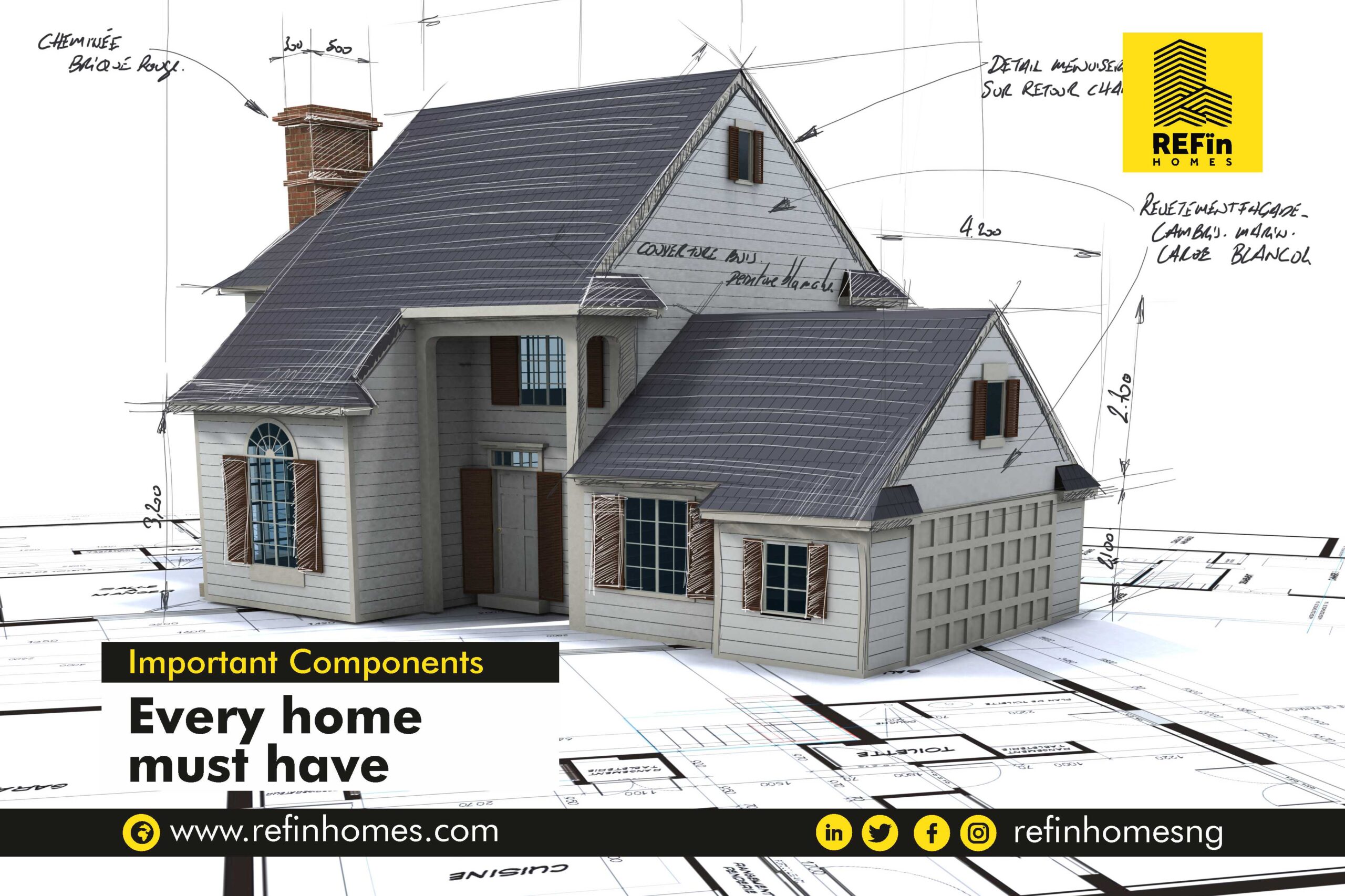Important Components Every Building Must Have
Components can be described as elements or parts that make up a larger whole. Every functional building has different component parts that make the building. No single component in a building can be referred to as a complete structure, they are simply part of the building. Building components can therefore be described as constituent parts of a building that are manufactured as independent units, subsystems or subassemblies, that can be joined to other elements to form a more complex item called a building.
A combination of components can be described as an assembly. Therefore, A building can be described as an assembly of several functional components.
There are different building components that make up a building. Major building components.
- Foundation
- Walls
- Openings ( Doors, windows and lintels and sills)
- Roof
- Stairs, lifts
- Finishes
- Services
FOUNDATION
Foundation is the lower part of a structure that connects the structure to the ground. The Foundation’s primary function is the transfer of load from the structure to the ground. There are different kinds of foundations and the choice of foundation depends on factors such as building design, location, soil type and structure.
There are two major categories of foundation
- Shallow foundation and
- Deep foundation.
Shallow foundations are used where the loads imposed by a structure are low relative to the bearing capacity of the surface soil while Deep foundations are used where the bearing capacity of the surface soil is not adequate to support the loads imposed by the structure hence a need to transfer the loads to deeper layers for higher load-bearing capacity.
Types of Shallow foundation:
- Strip foundation: strip foundations provide a continuous strip of support for linear structures such as a wall. They are most suitable for soil with good bearing capacity. They are commonly used for low or medium-rise structures.
- Pad foundation: Pad foundations are used to support concentrated loads such as columns. They can either be circular or rectangular.
- Raft foundation: Raft foundations are slabs that cover a wide area, often the entire building footprint. They are majorly used where the soil has the tendency to settle under imposed loads. Raft foundations are introduced to provide additional support for topsoil where pad or strip foundations are not sufficient to sustain the building load.
Types of Deep foundation:
- Pile foundation: Pile foundations are long, slender columns typically made of steel or reinforced concrete introduced to transfer building loads into deeper and more stable soil strata. Piles can be prefabricated and driven into the ground as in Driven piles or poured in situ as in Bored piles.
- Caisson foundation: Caisson foundations are used in areas submerged in water. They are suitable for the construction of underwater foundations They are watertight retaining structures sunk into the ground by removing materials from the bottom. Caisson can be made of different materials; timber, steel or reinforced concrete and they can be prefabricated or constructed off-site and then moved to where they will be sunk into place.




